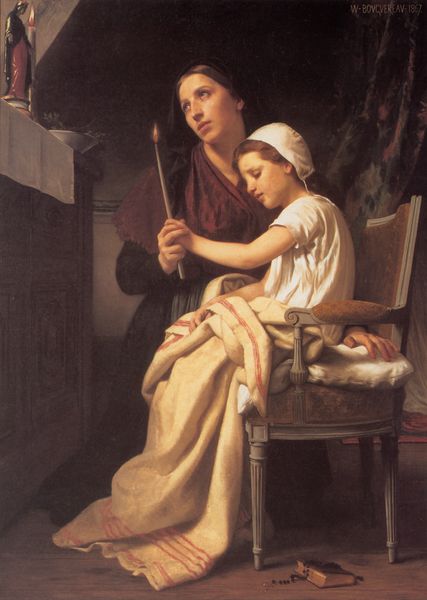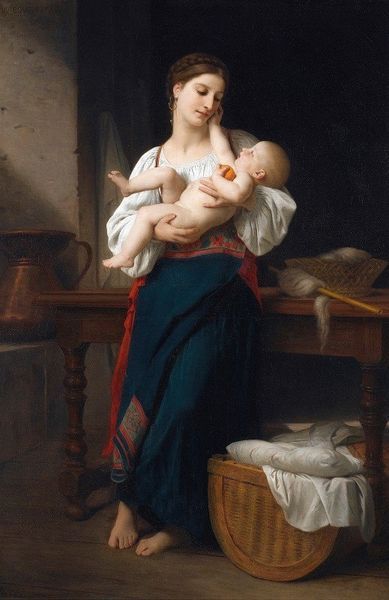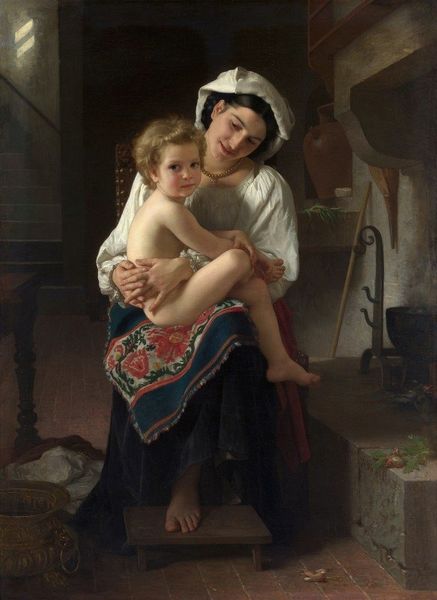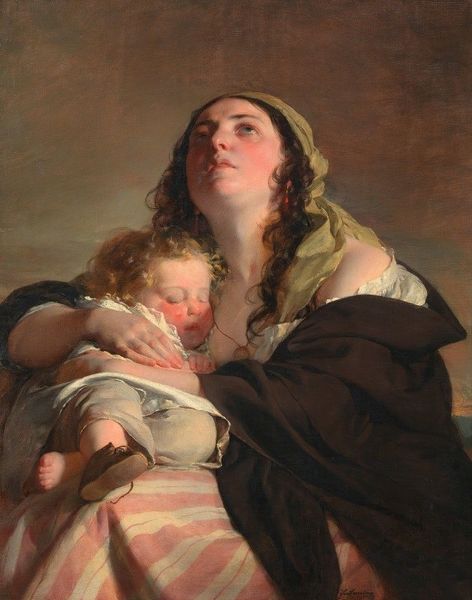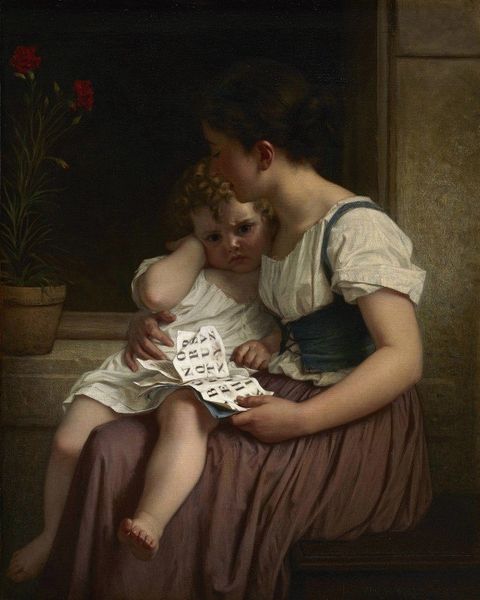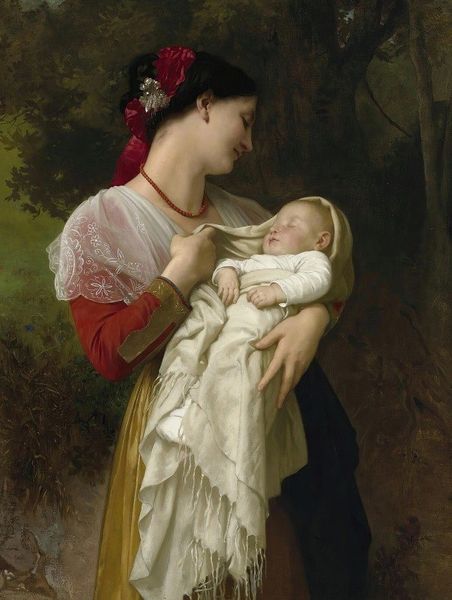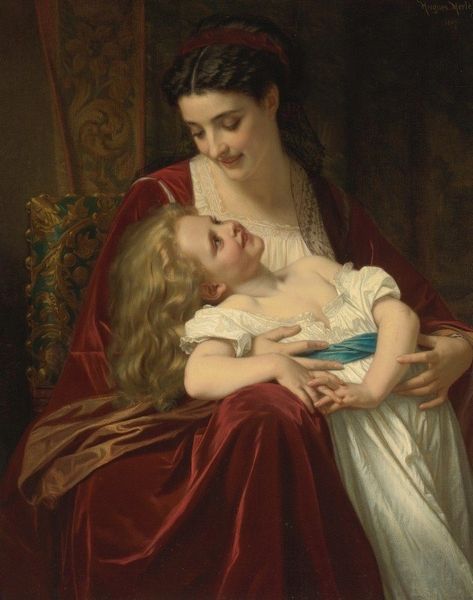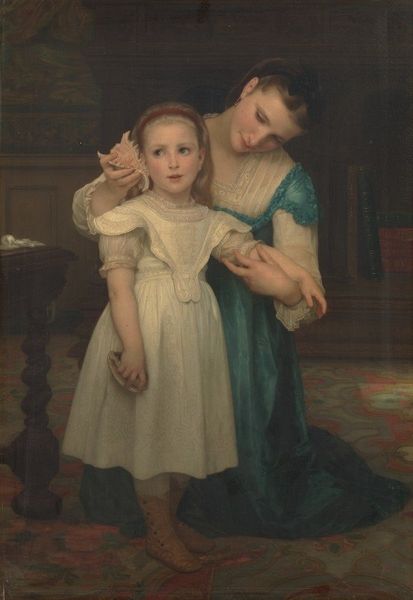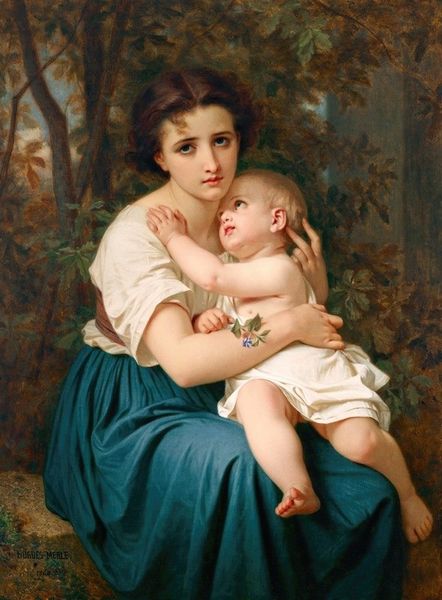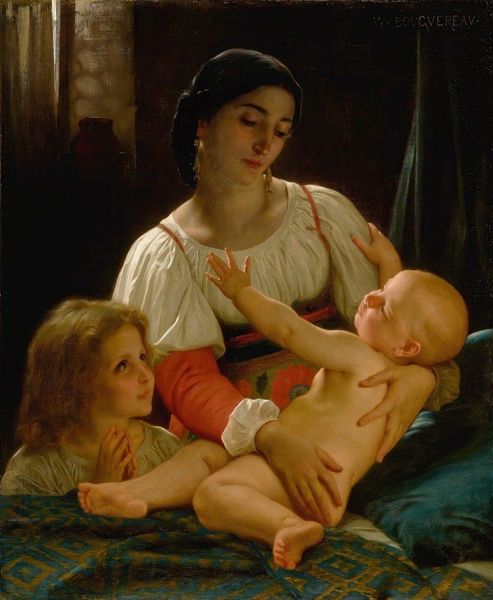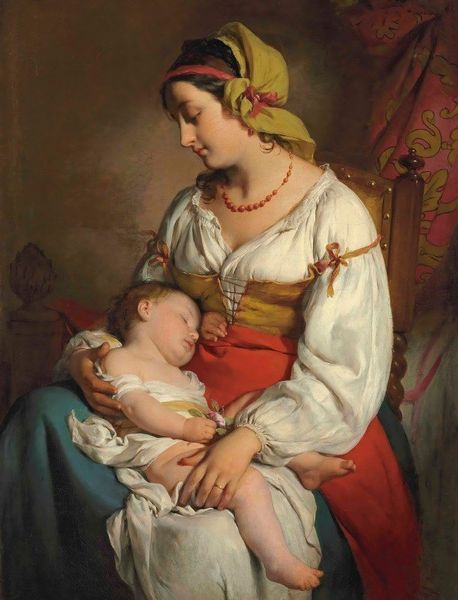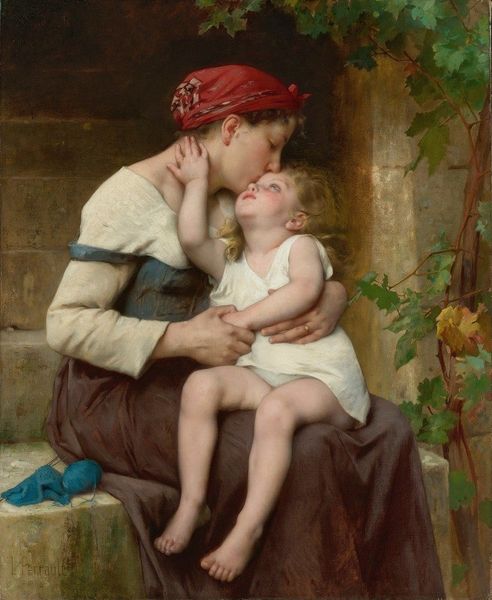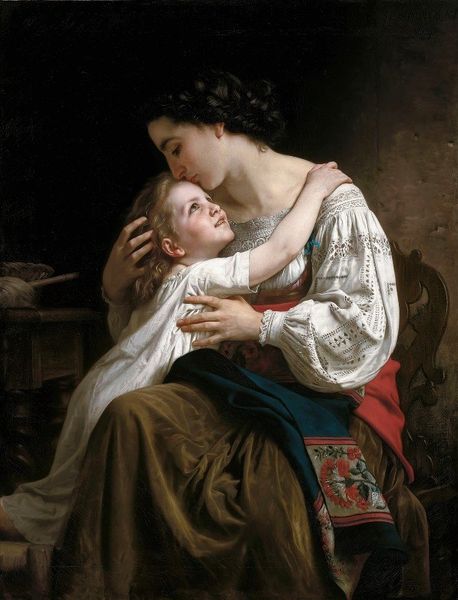
painting, oil-paint
#
portrait
#
figurative
#
painting
#
oil-paint
#
figuration
#
romanticism
#
genre-painting
#
academic-art
#
fine art portrait
Copyright: Public Domain: Artvee
Editor: So this is "Le Voeu," an oil painting by William Bouguereau. There's a woman and child holding a candle, and there's such a strong feeling of...melancholy? What do you see in this piece? Curator: I see a potent image that speaks volumes about gendered expectations and the societal burdens placed on women, particularly within the context of 19th-century domesticity and religious piety. This seemingly sentimental scene is ripe with the quiet anxieties of women bound by patriarchal constraints. Editor: Can you expand on that a bit? I wouldn't have looked at it that way at all. Curator: Look closely. What is absent? Where is the father figure? The woman's somber expression, coupled with the child’s dependence, suggests a weight of responsibility disproportionately placed on her. The presence of religious iconography—the statue and the rosary—further emphasizes this through a narrative of female suffering and devotion, practically a burden to carry. Editor: So the religious aspect reinforces that unequal power dynamic? Curator: Precisely. The painting uses a visual vocabulary of sentimental devotion to subtly underscore the limitations imposed upon women in that era, urging us to consider whose stories are being told and whose are being silenced. Does it alter your initial sense of 'melancholy'? Editor: It really does. It makes it so much more complex, much more about systems, and much less about individual sadness. Curator: Exactly! By interrogating those silences, and viewing it through an intersectional lens, art history becomes not just a record of aesthetic achievements, but also a crucial site for understanding social power dynamics.
Comments
No comments
Be the first to comment and join the conversation on the ultimate creative platform.
